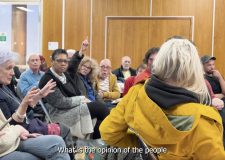News: Brighton and Hove City Council leader Jason Kitcat on our city’s future
Thanks to the government’s National Planning Policy Framework (NPPF), development is far more likely to happen. The question before councillors later this month is do we want to shape where and how it takes place.
For two years we have been rewriting the local blueprint for development in Brighton and Hove, the ‘City Plan’, to set out what kind development we want to see. The context is daunting. Brighton and Hove is geographically constrained by the sea to the south and a national park to the north. We have a severe shortage of suitable sites for housing, with 18,000 households on the waiting list.
Meanwhile, many small and medium-sized businesses are struggling to find space, as government encourages commercial properties to be converted into housing. At the same time, we want to see affordable housing, sustainable transport, and supporting biodiversity embedded in all new developments.
However, the government must rubber stamp our plan in order for it to come into effect. And without a local plan, any new development proposals are dealt with under national laissez faire policies, which allow poor quality developments to be built on greenfield land.
We must show we’ve looked at all available land – including the remaining pockets of urban fringe. Much of this is undevelopable – but by showing we’ve looked at it, our plan gets approved, and we can also stipulate high standards for any future developments brought forward on privately owned land.
Any discussion of building on the urban fringe is difficult for many colleagues. However it’s
imperative that all parties agree a sound city plan – otherwise all local planning controls effectively disappear citywide.
So before us is a Hobson’s choice: if our city plan doesn’t sufficiently meet government requirements, it will be thrown out in its entirety, allowing low-quality development on sensitive sites to go ahead. We have the chance to fight back for affordable housing, balanced development, protected and accessible green space, and low-carbon buildings. For that, we need the protections and ambitions of an agreed city plan.



















